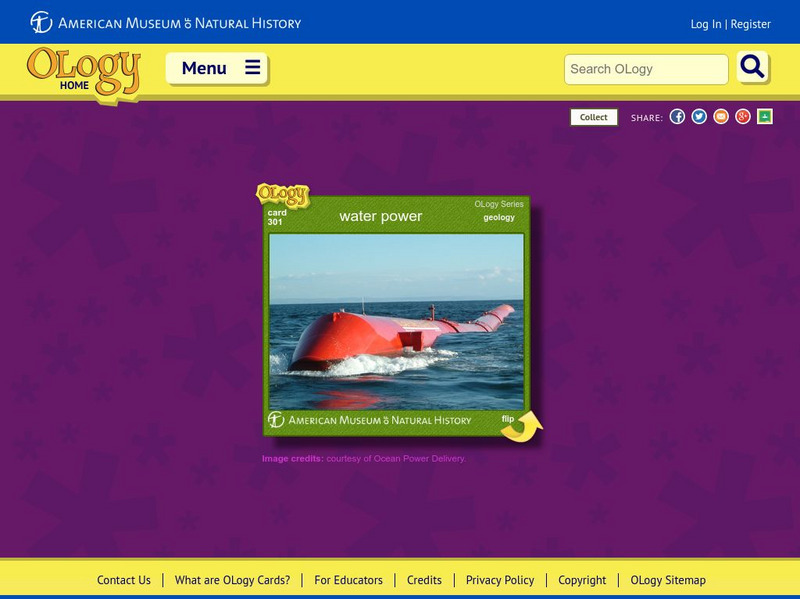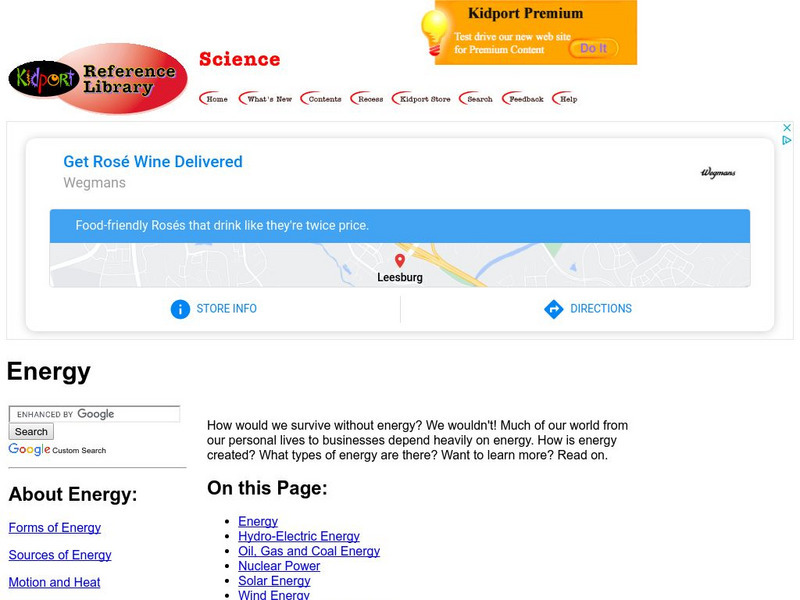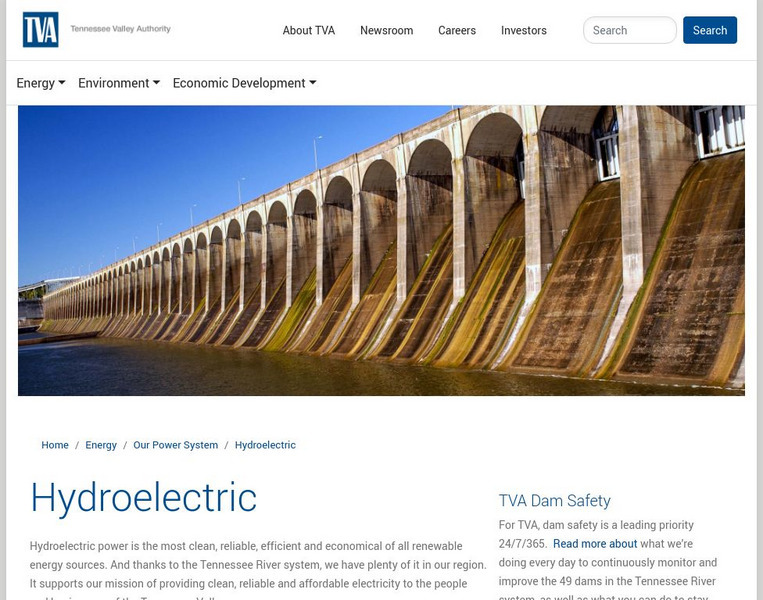TeachEngineering
Teach Engineering: Waterwheel Work
Students learn the history of the waterwheel and common uses for water turbines today. They explore kinetic energy by creating their own experimental waterwheel from a two-liter plastic bottle. They investigate the transformations of...
TeachEngineering
Teach Engineering: A Case of Innovation
A white paper is a focused analysis often used to describe how a technology solves a problem. In this literacy activity, students write a simplified version of a white paper on an alternative electrical power generation technology. In...
TeachEngineering
Teach Engineering: Clean Energy: Hydropower
Hydropower generation is introduced to students as a common purpose and benefit of constructing dams. Through an introduction to kinetic and potential energy, students come to understand how a dam creates electricity. They also learn the...
US Energy Information Administration
U.s. Eia Energy Kids: Energy Sources: Renewable
Find out what renewable energy is and the role it plays in meeting energy needs. Renewable energy sources include biomass, hydropower, geothermal, wind, and solar.
US Energy Information Administration
U.s. Eia Energy Kids: Energy Sources: Renewable
Learn about renewable energy sources including biomass, which includes biofuels, hydropower, geothermal, wind, and solar.
Energy4Me
Energy4me: Great Energy Debate
After learning about all the energy sources, students will be able to list and identify the economic and environmental advantages and disadvantages of them.
National Academies of Sciences, Engineering, and Medicine
The National Academies: Renewable Sources: Hydroelectric
Hydroelectric power has been a major source of energy production in the United States. More recently, other alternative energy sources have taken some of its market share. Hydroelectricity has both advantages and disadvantages, briefly...
E-learning for Kids
E Learning for Kids: Science: Cruise Ship: What Sort of Energy Is Provided by Water?
Shana is learning about water. Help her discover all the different ways water can provide us with energy.
National Institute of Educational Technologies and Teacher Training (Spain)
Ministerio De Educacion: Agentes Geologicos I
What do you know about external geological agents? What are they? How do they work? Where do they work? What effect do they have? You will find the answers to these questions in this unit which has 15 interactive activities.
US Geological Survey
Usgs: Hydroelectric Power: How It Works
Check out this animated site of a hydroelectric generator. There is a picture of a real generator along with a description of how it works.
NPR: National Public Radio
Npr: What Are the Non Wind and Non Solar Renewable Resources in Texas?
An overview of renewable energy resources in Texas, aside from wind and solar energy. Covers hydropower, geothermal energy, and biomass.
TeachEngineering
Teach Engineering: Water Power
In this activity, students observe a model of a waterwheel to investigate the transformations of energy involved in turning the blades of a hydro-turbine into work. Students work as engineers to create a model for a new waterwheel while...
TeachEngineering
Teach Engineering: A River Ran Through It
Students learn how water is used to generate electricity. They investigate water's potential-to-kinetic energy transformation in hands-on activities about falling water and waterwheels. During the activities, they take measurements,...
Read Works
Read Works: Energy for Life
[Free Registration/Login Required] An informational text about the need for renewable, natural energy sources for the future. A question sheet is available to help students build skills in reading comprehension.
TeachEngineering
Teach Engineering: Renewable Energy
In this lesson plan, students are introduced to the types of renewable energy resources. They are involved in activities to help them understand the transformation of energy (solar, water and wind) into electricity. Students explore the...
Other
Ucs: How Hydrokinetic Energy Works
Description of how hydrokinetic power works including resource, conversion, and environmental issues.
Other
Lesson Plan: Generate Your Own Hydropower [Pdf]
In this online lesson plan, learners will generate their own hydropower demonstrating how power is converted to electricity.
CK-12 Foundation
Ck 12: Fourth Grade: Physical Science: Moving Air and Water as Energy Sources
[Free Registration/Login may be required to access all resource tools.] Discusses wind energy and hydroelectric energy.
American Museum of Natural History
American Museum of Natural History: Water Power O Logy Card
OLogy cards are like virtual baseball cards about all kinds of science topics. This card is about power generated in hydroelectric plants from water. See if you can answer a few questions about water power when you're done reading.
CK-12 Foundation
Ck 12: Life Science: 12.29 Renewable Resources
Learn how some renewable resources contribute to alternative energy sources.
Energy for Sustainable Development
Kids and Energy: Hydro Energy
Hydropower is a clean, renewable and reliable energy source which converts kinetic energy from falling water into electricity, without consuming more water than is produced by nature. Quite simply the oldest method by which renewable...
Kidport
Kidport Reference Library: Energy
A simple introduction to energy, offering information on hydro-electric energy, fossil fuels, nuclear power, solar energy, and wind energy.
Other
Chewonki Foundation: Pathways to a Sustainable Future: Renewable Energy
Information on different forms of renewable energy with links for student projects, resources for teachers, and links to related resources.
Other
Tennessee Valley Association/ Hydroelectricity
Facts and information about hydroelectric power in the Tennessee Valley. Diagrams and schematics of a hydroelectric power plant provided.


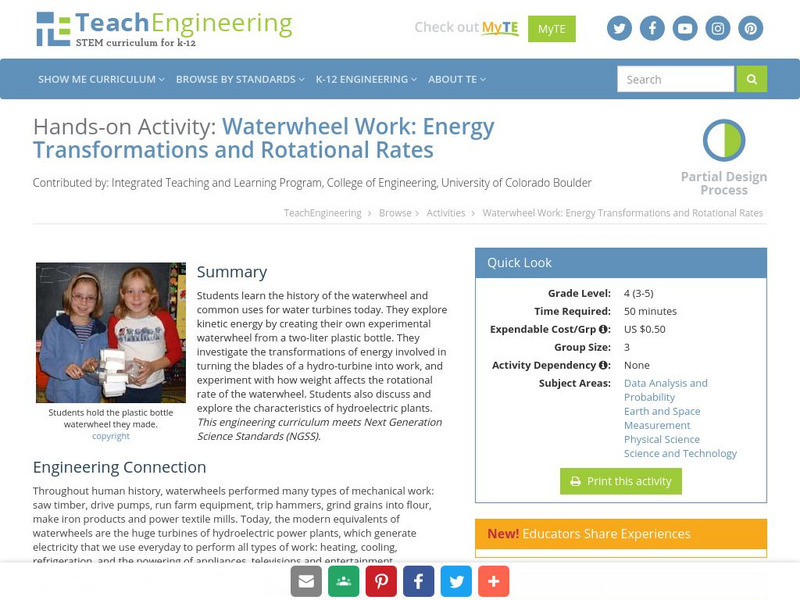

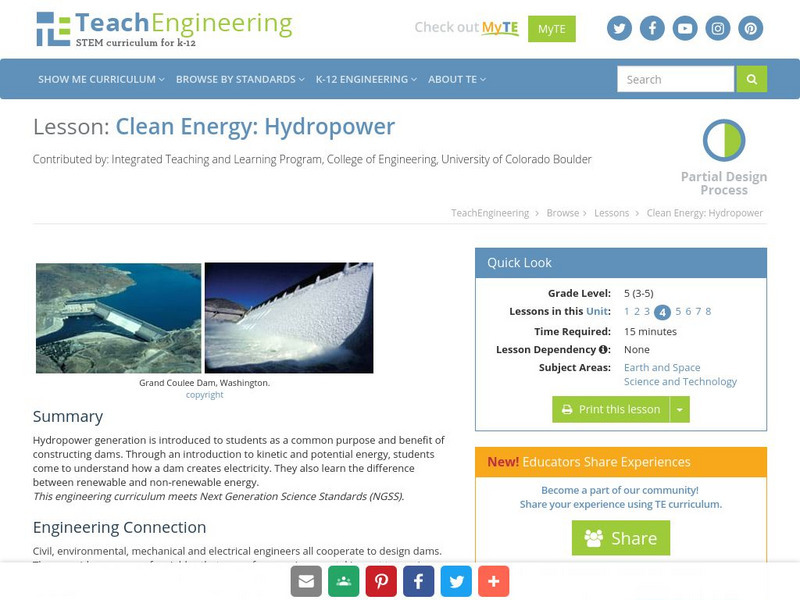
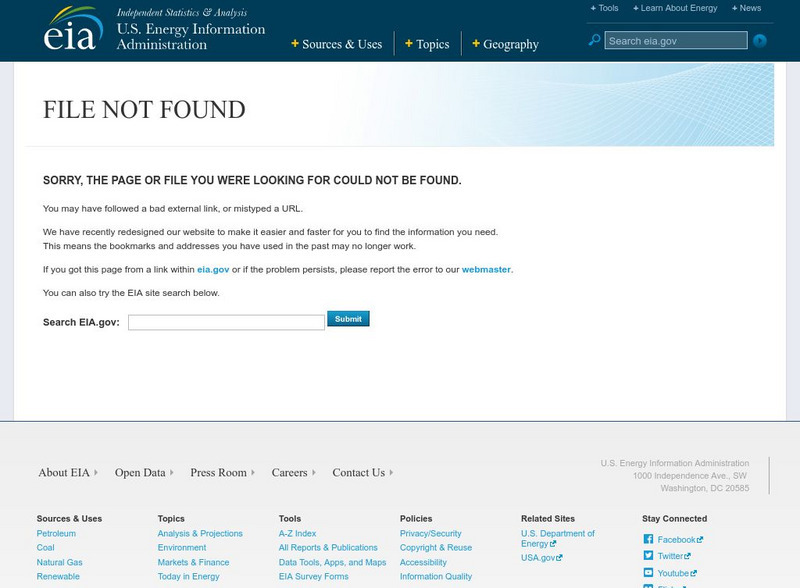


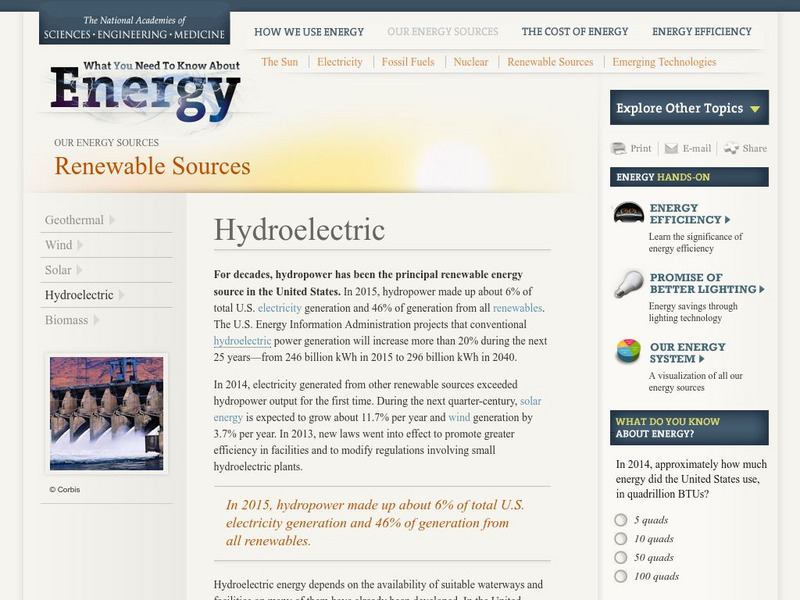


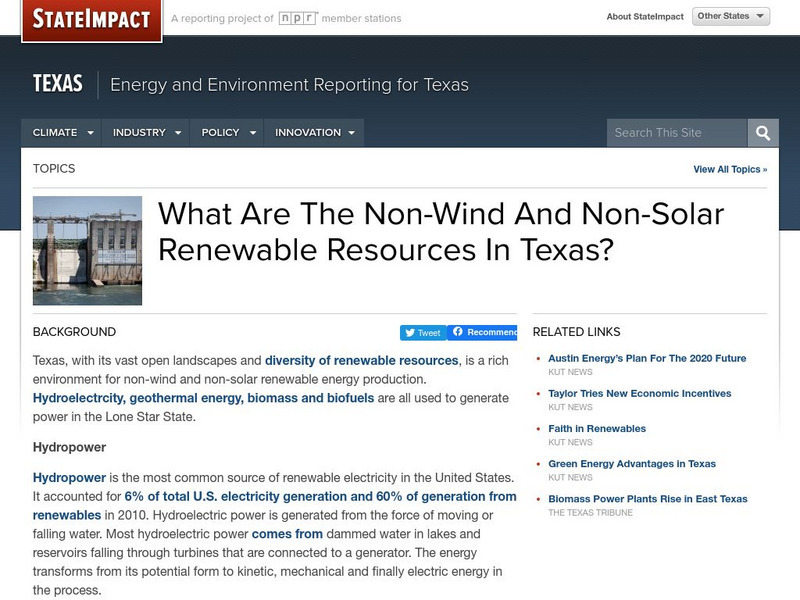
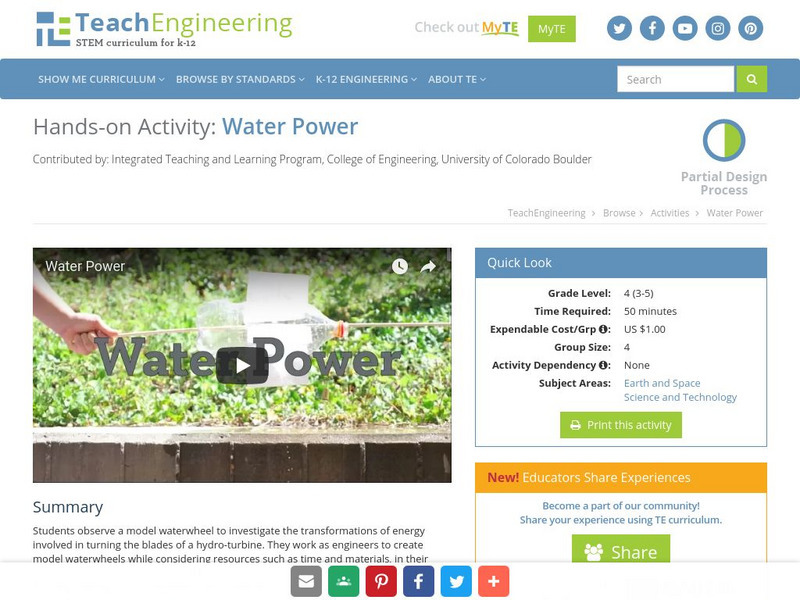
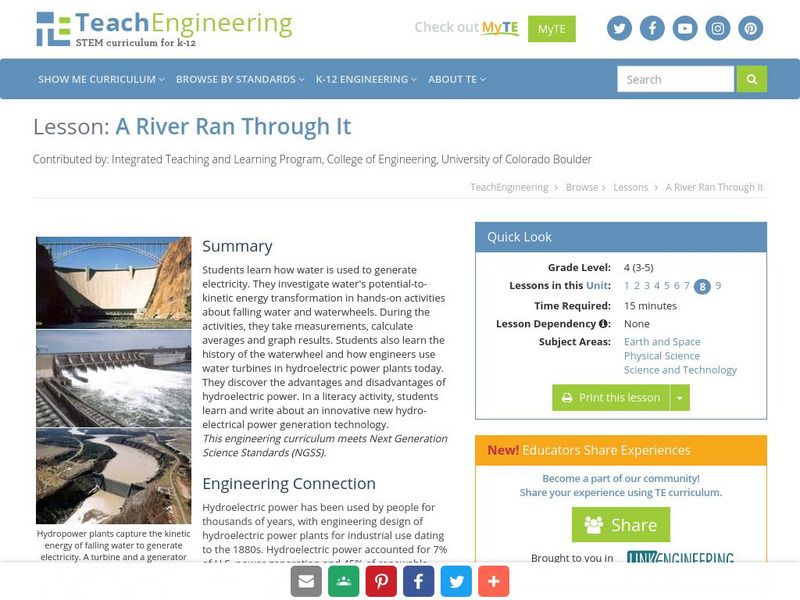

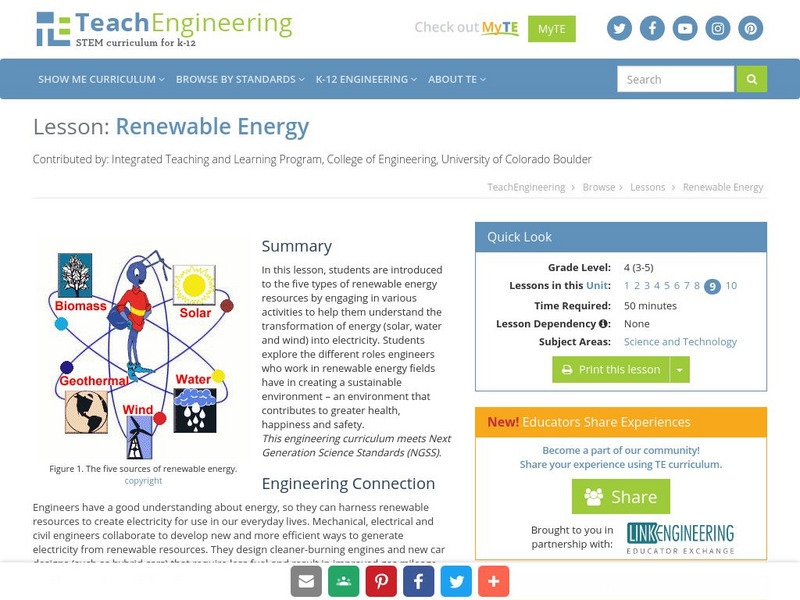
![Lesson Plan: Generate Your Own Hydropower [Pdf] Lesson Plan Lesson Plan: Generate Your Own Hydropower [Pdf] Lesson Plan](https://content.lessonplanet.com/knovation/original/361190-f16bedfd87822a19b49ab449592b0198.jpg?1661256241)
